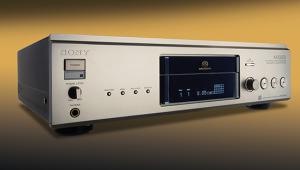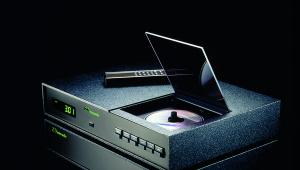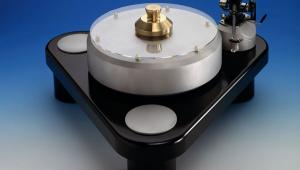Two Konnektikut Yankees Page 2
The second aspect concerns the depth of image. Again, although the KSA-50 is excellent in this respect, the '100 is that little bit more transparent without pushing information forward at the listener. I found this to be surprising, generally having found that bigger amplifiers seem to trade-off this aspect of reproduction against greater power delivery.
Yet if you take my Chopin piano recording on the 1985 HFN/RR Test CD, the character of the hall ambience surrounding the piano is very subtly encoded, and is easily obscured/destroyed. The '100 allows you to hear all the more clearly the 'walls' of the hall. It doesn't quite have the midrange resolving power of the Audio Research D-115 power amplifier, but on the other hand it can drive loudspeakers with more authority. The 'slam' with which it drove the Maggies at the Heathrow Penta, while still holding on to the midrange detail, had to be heard to be believed.

Hooking up the PAM-3 didn't give any problems, it being possible to connect the earths on both pre- and power amplifier leads to the mains earth without hum. (The preamp is effectively double insulated and its case has a 10ohm ground-lift resistor: main system earth is thus at the power amplifier where the most current flows to ground.)
There is no mains on/off, the preamplifier being left on all the time, the case getting very slightly warm to the touch. I found that it took around 24 hours after switch-on for the sound quality to reach optimum, presumably due to the need for the electrolytics in the power supply to reach operating tem perature. Be aware of this if you audition the PAM-3 at a dealer. (Most transistor preamps benefit from a warm-up period, in my experience.)
Deciding Factor
Ergonomically, the preamp was a delight to use, the separate source and record selectors proving useful, as did the mute position which is next to phono on the switch. Disc listening was done with a 100ohm input impedance, the higher values giving a slight EHF edge to the sound, and taking the cover of the amp off to change internal switch settings took only a minute or so.
The primary characteristic of the sound via LP is a 'coolness'. lt does not sound 'transistory', neither does it sound unmusical or brash in the manner of, say, the original Musical Fidelity The Preamp. Rather, it is like a tidier Naim 32/5 with greater extension at frequency extremes (the measured RIAA response shows a –0.5dB shelf above 5kHz). If you take the Hi-Fi Today Nimbus recut of Vaughan Williams' Tallis Fantasia, the lower strings in this close-ish (Kingsway Hall?) recording are given their due weight, without either confusion in the midrange or overemphasis at high frequencies.

Compared with the similarly-priced SP-10, the valve preamp is more transparent. The PAM-3, however, has even more low bass authority than the SP-10 and is very much quieter on its disc input; the latter may well be a deciding factor for some audiophiles.
Vicious Loads
Using my Marantz CD-63 CD player, lsoplatted and Flux Dumpered, into the Aux inputs, the sound was nothing to write home about, although substituting a passive pot for the PAM-3 significantly degraded the sound quality. Taking the CD player into the PAM-3's CD input and setting up the DIL switches for a Philips-type player gave a sound very much more like that which would be expected from an audiophile system. There was now a slight HF rolloff – I still feel that a flat frequency response on CD is not what is needed when so many engineers seem to balance rock recordings to sound too bright – while the HF group delay added to the sense of 'space'. Our measurements show a phase change of –155deg; (Sony) and –119° (Philips) at 20kHz, with associated amplitude changes of –5dB and –3dB.

I must point out that sheer value-for-money considerations are not relevant with this kind of product. The Law of Diminishing Returns applies as strongly in hi-fi as anywhere else and only the customer can decide if the real improvements offered are worth the asking price. However, I have no doubts about recommending the KSA-100 to anyone who wants a power amplifier approaching the best valve designs when it comes to imagery and presentation of musical detail but with the transistor amplifier's ability to drive vicious loads such as the Scintilla. (Current production KSA-50s also feature the revised circuitry.)
The PAM-3, however, is more problematic. After all, pricewise, it is up against strong competition from the Audio Research SP-10, which costs another £500, and I am told that the latest Conrad Johnson Premier Three preamp is also a strong contender at this level.
If you feel that valves are not the way to go, though, then the PAM-3 will give a less incisive but still musical performance. However, those advocates of the silver disc would do well to check out Krell's less expensive but similarly-styled PAM-5 preamp, which has a mono power supply and simpler tape arrangements, but features the useful phase EQ on the CD input.


















































